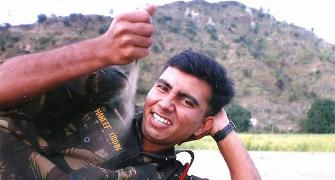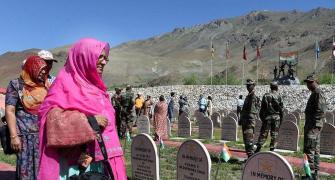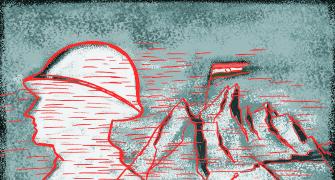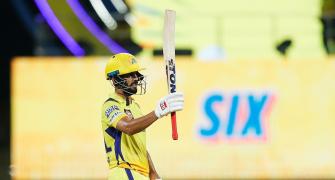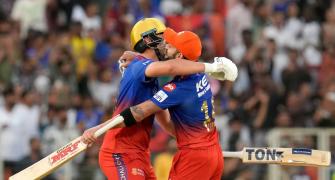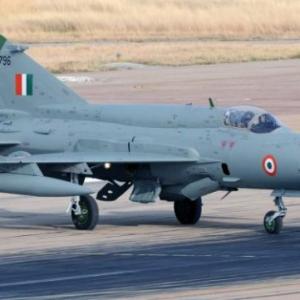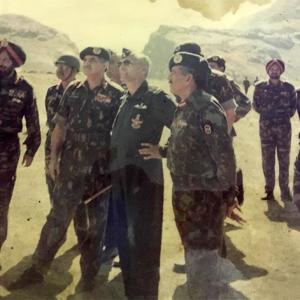'The gun is like family. Nothing can be more important, more respectable and more dear to an artillery man.'
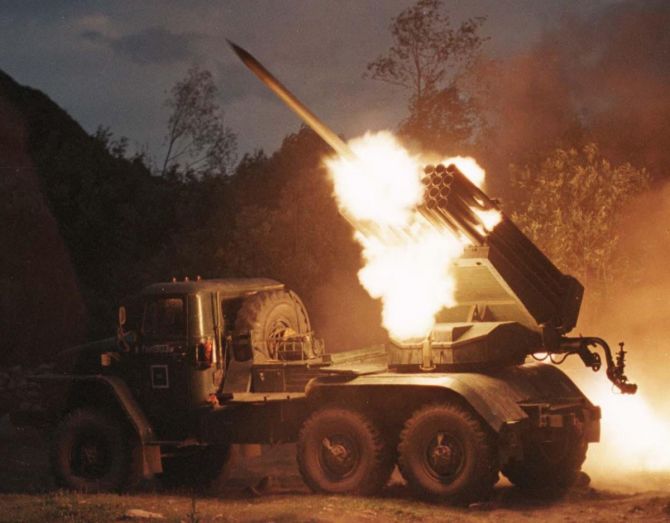
Major General Ajay Pal Singh, VSM, retired is a Kargil war veteran who commanded a battery of six 130 mm Medium guns during the war.
A proud artillery man, the officer who served the Indian Army for over three decades, looks back at those two months of the war - and the pivotal role played by the artillery in securing a hard fought victory.
"Whenever a gun passes in front of us and we are in uniform, we salute the gun. We don't put our foot on the gun platform. Every morning, we touch and salute the gun, he tells Rediff.com's Archana Masih in the concluding segment of two-part interview.
- Part 1 of the Interview: 'We Pounded Pakistani Positions Day And Night'
What are your foremost memories when you look back now at those days when you and your men fought the Kargil War?
I will begin with an incident that took place before the war: We were deployed in the Gurez sector at a height of 14,000 feet. It was the month of November. We had to come down with our guns and it was snowing. There was at least two to three feet snow.
A tractor or a vehicle is used to tow the gun back to a safe place where it can be placed under a shed so that it is not adversely impacted by the snow.
Since it was impossible for a vehicle to move in that snow, we hit upon an innovative idea. We asked for a road roller from people who were building roads in the border area. Their road roller had anti-skid chain tyres. We gave them some diesel and moved one gun per day to a place around 4 kms away.
It was a very difficult task because we were on the edge of a deep crevasse, about 500 feet down. A wrong move could result in the gun hurtling down, hence we moved it very slowly - at less than 0.5 kilometres per hour. Nobody climbed the gun and we all moved on foot.
It took us six days to move six guns down, but we did it safely. Nobody was injured and we could restore the guns into their sheds.
This happened before the war in November 1998.
The second incident that I remember is when a driver and subedar were returning after delivering ammunition on to a gun. The jeep fell off at a sharp curve, crashed 500-600 feet down and broke into pieces.
We lost a very good junior commissioned officer and that incident has remained in my memory. A memorial has been built and anyone who passes by, pays their respect.
These soldiers will remain in our hearts throughout our lives. We respect their memory and their loss impacts us emotionally.

Can you explain the impact and effectiveness of your guns during the war? How do they compare with the Bofors which played a pivotal role in Kargil?
A battery of six guns [130 mm Medium Guns] covers an area of 250x250 metres of the enemy. It had a devastating effect because it can destroy men and material that are in that range.
The guns were fired day and night and were always functional. We demolished enemy posts with our artillery shells with devastating effect.
Our battery of guns occupied an area of 300x 300 meters and Bofors occupies around 500x500 meters. Gun to gun distance is not more than 20 to 30 meters or maybe 40-50 meters maximum.
The Bofors is more technology savvy. My gun may have been of older vintage, but its demonstration effect was much more than the Bofors.
When the ceasefire was announced, came down to our permanent locations, but our guns remained deployed.

What is the relationship that men of the artillery have with their guns? Your guns must be very dear to you, isn't it?
I agree completely. We consider our guns as our colours. Whenever a gun passes in front of us and we are in uniform, we salute the gun. We don't put our foot on the gun platform. Every morning, we touch and salute the gun.
The gun is like a family to us and we always keep it functional. Nothing can be more important, more respectable and more dear to an artillery man.
Feature Presentation: Aslam Hunani/Rediff.com

